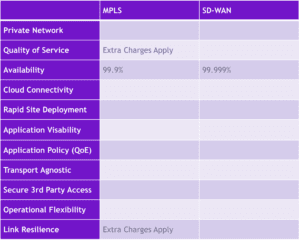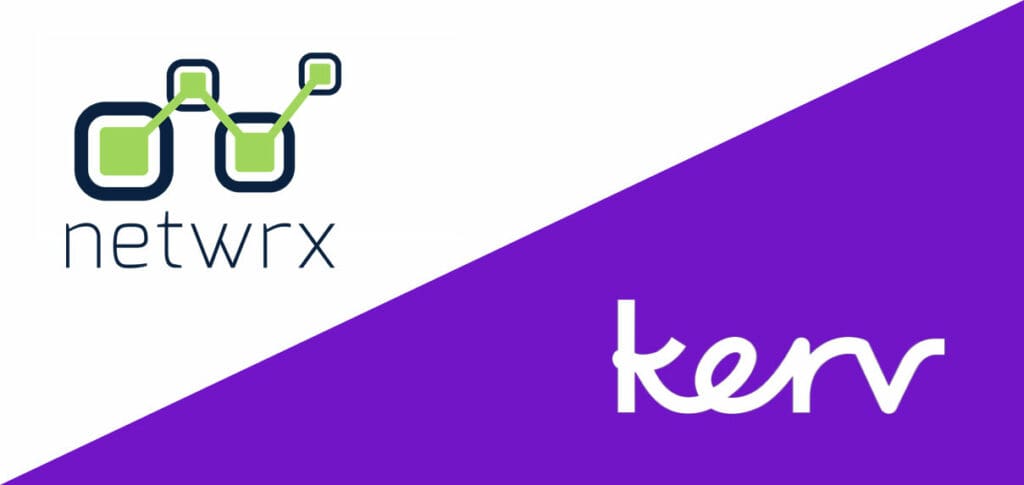
Graham Brown
CTO|Kerv Connect
Have a question?
Get in touchPublished 26/10/22 under:
At Kerv we’re huge advocates of SD-WAN, and we regularly speak to clients who are interested in the technology as a cost saving opportunity.
Does SD-WAN always mean cost savings?
There is a widely held assumption within the global market that SD-WAN saves you money, and this can be both a blessing and a curse. On one hand, it gets clients interested in the potential of SD-WAN and helps us start productive conversations about how we can help them. However, it does mean we have to set expectations for what’s achievable because frankly, making big cost savings on SD-WAN is a lot harder to achieve in the UK than it is in the US.
As with many things, the answer to the question of whether you can save money with SD-WAN is “it depends.” There’s a widely held belief that SD-WAN saves you money, but the reality is that this depends where in the world your business is operating.
How MPLS changes the equation

The reason for this is that depending on the network infrastructure that’s available in the country you’re based, SD-WAN may or may not be a more cost-effective option than what you’re already using.
Over the past 20 years there’s been a lot of investment in MPLS (multi-protocol label switching). This traditional network architecture was designed to reduce complexity in network environments.
To illustrate; you have two locations and in order to connect those two locations, you need to have a link between site A and site B – that’s a point-to-point link between two locations. When your network that starts to scale, adding in a third location, C, then you’ll need to buy a link from C to A, and C to B. This is called a fully meshed network, and it quickly becomes very complicated and expensive to scale.
MLPS networks instead create a “hub” that everybody connects to, removing the need for these additional connections. This means that as networks scale, they become simpler, not more complex.
This means that the cost associated with connecting into an MPLS network is defined by the distance to the nearest hub. In the UK, that’s usually not very far, but in a bigger geography or a region where there’s been less investment in the technology, making that connection could be considerably more expensive.
Cost savings by region
The cost of MPLS networks varies significantly by region, meaning that the potential savings of moving to SD-WAN vary accordingly.
UK government has invested significantly in getting connections into as many regions of our small and densely populated island as possible, so broadband is relatively cheap. In North America, cables need to run over much longer distances and there’s not been the same level of government investment. This means there’s a huge cost benefit to SD-WAN in the US, and since this where most SD-WAN vendors are based, there’s a tendency for providers to push cost as a key selling point of the technology.
For large financial institutions in the US, the savings can be even higher, because many are still using a technology called the T1, which gives a very low bandwidth connection with the same upload and download speed. You can pay anything from $300 to $500 a month for one of these connections and that drives connections around about 1.5 megabits per second, compared to a broadband connection that would drive bandwidths of between 50 and 80 megabits per second for around $40 a month.
In other parts of the world the savings can vary. In Malaysia, for example, we’ve seen customers paying £60,000 per month for single connections, so SD-WAN is a no-brainer, while in Japan it’s less clear cut.
The situation in the UK
In the UK, MPLS is commonplace and relatively cheap, and T1 connections were retired in 2015. This means that moving to SD-WAN is unlikely to generate significant cost savings compared to standard broadband.
The real cost-saving opportunity SD-WAN presents for UK-headquartered companies is in connecting international offices, where they can take advantage of these larger cost savings.
The next best use case for achieving cost savings in the UK is businesses connecting using private Ethernet circuits. We can increasingly swap those out for broadband and wireless connectivity.
However, for UK-based companies who are already using broadband connectivity, there are very limited savings to be made compared to those available to North American businesses or those in other regions where broadband is more expensive.
That’s not to say that cost savings are impossible. There definitely is still an opportunity to save money by moving to SD-WAN, but it’s not the no-brainer it is in the States. We might be talking about a difference of a couple of pounds per location per month rather than hundreds of dollars in the US. That still adds up, but it’s not guaranteed.
So do I really need SD-WAN?
There are still significant benefits to taking SD-WAN, over and above just cost savings within the WAN. SD-WAN allows businesses to achieve greater consistency and flexibility in their network architecture, whilst maintaining high levels of security and reliability.
SD-WAN gives you the flexibility to seamlessly blend a range of connections and vendors, cherry-picking the best option for each location to create a WAN that delivers the best connectivity for each individual site.
SD-WAN also allows you to build greater resilience within your network, providing fallback options for unreliable connections and offering simple, fast setup options for temporary connections.
While cost savings might be more modest than those available in other regions of the world, SD-WAN still has a lot to offer UK businesses.
Discover the potential of SD-WAN for your business
No business would turn down the opportunity to save on their networking costs. However, the answer to the question of whether it’s possible to generate savings with SD-WAN is very geography-centric.
To properly understand the potential benefits of SD-WAN, you need a thorough understanding of your current infrastructure, how the technology is currently being used, and why things have been designed the way they are.
That level of insight into a network is quite a rare thing, and is where Kerv Connect’s expertise comes in. To find out more about how we could help, contact us today.
Have a question?
"*" indicates required fields




